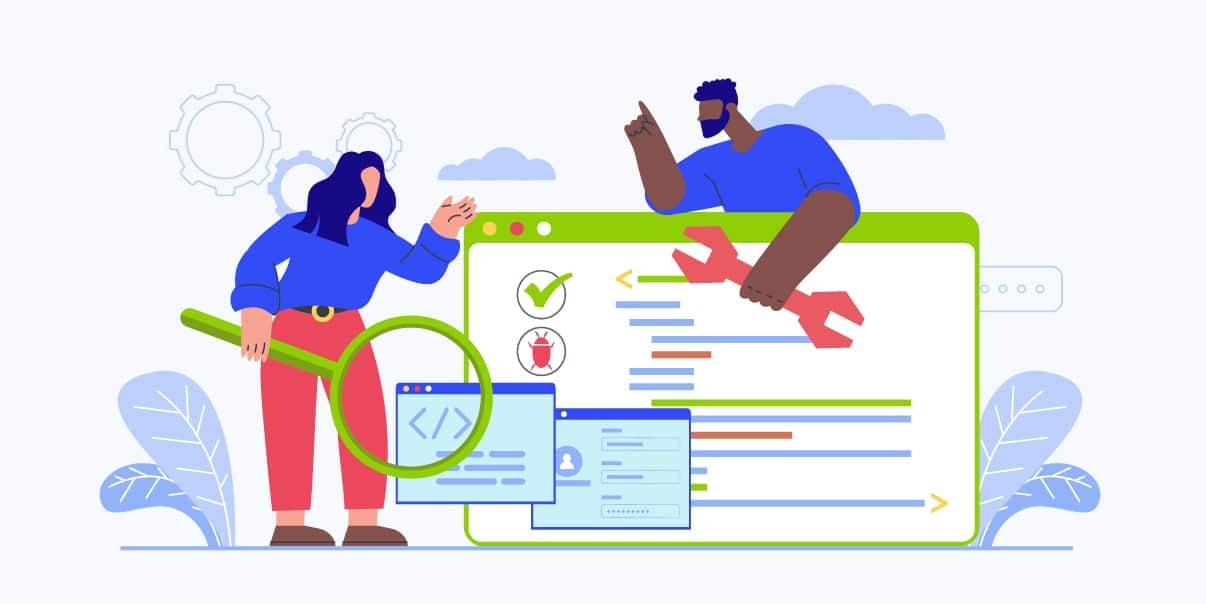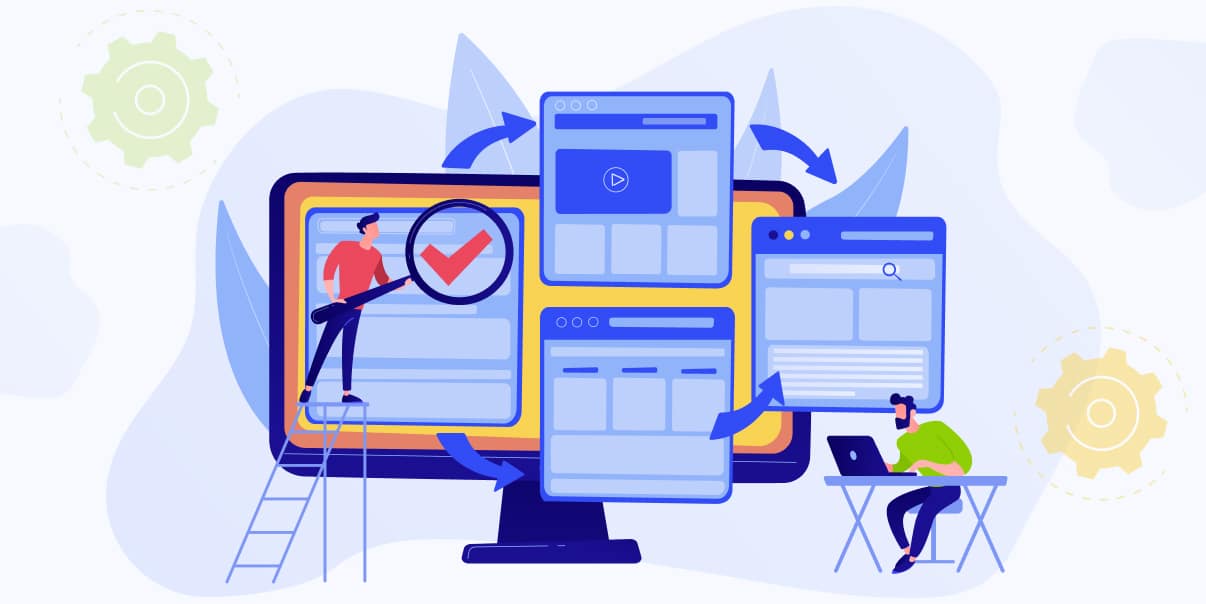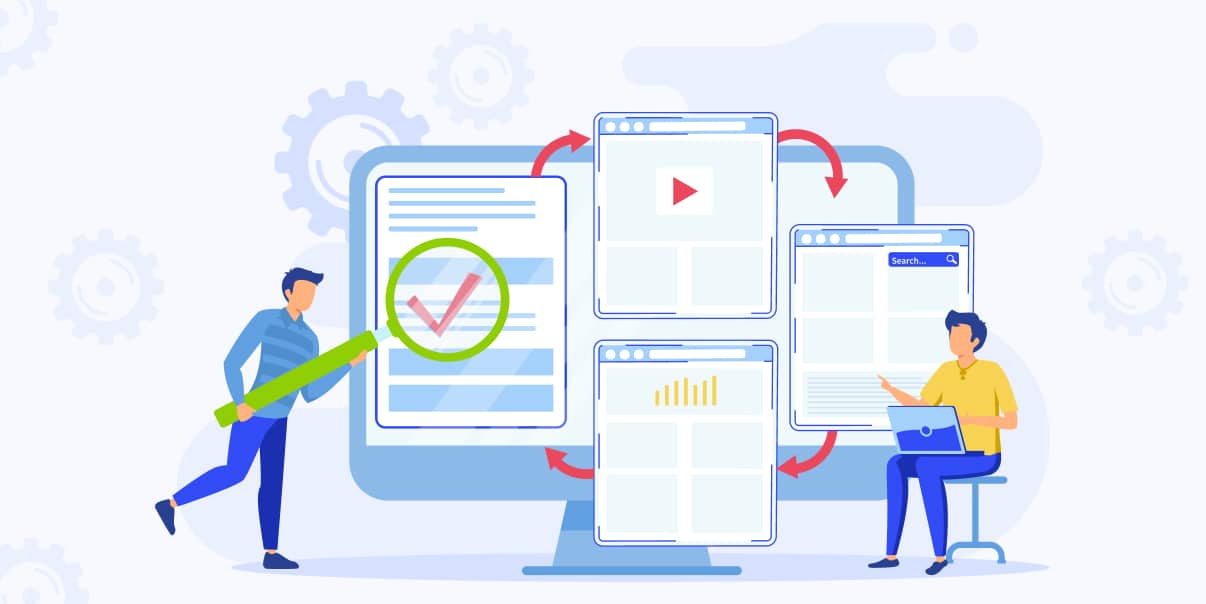Current Software Testing Trends and
Where We Stand Today

Software testing continues to advance with innovative industry trends. It has gone through a digital transformation. It started as tedious manual tests. Now, software testing has become one of the top priorities in software development.
As technological advancements continue, interesting software testing trends emerged. Software development companies need to keep up with these advancements.
Let’s dig deeper and marvel at some of the trends in the software testing landscape this year!
What Are the Major Software Testing Trends in 2022?

It is not enough that you perform good old software testing. You should keep up with the trends in software testing so you can be on par with other software companies.
We compiled a list of the latest software testing trends. Check them out!
UAT (Acceptance Testing)
User acceptance testing is one of the trending topics in software testing this year. That’s why more businesses are focusing on UAT.
Acceptance testing is often neglected. Usually, testers perform it in a rush. This is because they schedule it at the end of the software development life cycle.
In the past years, user acceptance testing has been a manual process. There were no effective testing tools. Testers do acceptance testing using spreadsheets, emails, and file sharing.
But in the following year, expect more effective and automated acceptance testing tools. Businesses can assess how users are accepting the software they offer.
DevOps
DevOps brings development and operations teams together. Combining these two allows software companies to build better and more efficient software.
DevOps has been an effective tool for meeting tight deadlines. It has helped companies to deliver quality software faster. This approach will allow you to respond fast to changes in software requirements.
Many companies in the software development industry have jumped on DevOps. It has great benefits like streamlined workflows and excellent software quality.
Regression Testing
One of the top software testing trends that you should keep an eye on is regression testing. Regression testing means testing all the code for bugs fixed in a previous version. Testers can perform manual or automated regression testing.
Watch out for this trend because it can help companies save money and resources.
Without regression testing, we’ll only look at the recent code. The bugs in the earlier versions may remain in the newer versions!
But, if we do regression testing, we’ll know the features we need to test again. We won’t waste time on features that customers have already tested and approved.
Automation Testing
Test automation is a process that reduces the time and cost spent on manual testing. Testers can do test automation using scripts, code files, or any other methods. It is an efficient way to perform automated tests and reduce human error.
AI and machine learning technologies are on the rise. Companies are adopting automation testing as an integral part of their testing strategy. As a result, expect a significant increase in demand for test automation over the next few years.
Integration Testing
Integration testing ensures that different components and parts of an application work together.
It detects errors or defects in earlier stages. It helps developers fix the errors before building the final product.
Integration testing is one of the top trends in software testing that we should all look out for. Seamless app integration is a must in today’s software industry.
User Testing
User testing is a great way to test your product from the perspective of your end user. It ensures that the software meets their needs. It also helps you identify issues with your product before they become big problems. As a result, users will have no trouble using or understanding the software.
User testing gives you access to feedback from real people. It allows you to make changes before they’re even released!
Accessibility Testing
Accessibility is important. It ensures that everyone can access information, regardless of physical limitations. It means building websites, mobile apps, and software that are accessible to anyone.
Accessibility testing may seem like it’s only relevant in healthcare or education. It’s not! It’s something that every company should be doing. It is vital if you’re designing any kind of interface for customers or clients!
Performance Testing
Performance testing measures the response time of an application. It tests the software’s ability to handle various types of load.
Performance Testing is an integral part of load testing and system testing. Developers can use it to identify bottlenecks and fix them immediately.
Performance Testing will continue to be one of the key software testing trends in 2022. It helps companies understand their applications’ capacity. This way, they can make adjustments before problems arise.
Selenium Testing
Selenium Testing came to life to automate the software testing process.
Selenium is an open-source tool that you can use to automate web application testing. It allows testers to write test scripts in any programming language. The most common languages are Java and C#. You can run them on different browsers to simulate user interactions.
It’s a popular tool because it’s easy to use and free!
Selenium has been around the software testing industry since 2004. But it didn’t become popular until 2011, when it became Selenium 2.0.
Since then, Selenium has grown in popularity and usage in the software testing world. It is due to its ease of use and ability to integrate with other tools. It works with Jenkins CI server or TestNG framework.
Scriptless Test Automation
Scriptless test automation has been around since the early 2000s. But it has only gained popularity in recent years.
Scriptless Test Automation doesn’t need you to write any code. It’s a type of test automation that relies on visual controls and checkboxes, rather than code.
It is one of the software testing trends that you can expect to see more of over the next few years. Scriptless test automation allows testing teams to create tests fast.
Artificial Intelligence (AI)
Artificial intelligence has been around since the 1950s. But it’s only recently gained popularity as a way for computers to program themselves.
AI technology is changing how we do everything. It changes how we create websites to how we play games. It even changes how we drive cars.
The use of AI and machine learning has been on the rise, and it shows no sign of slowing down. In fact, according to Statista, the global artificial intelligence (AI) software market is predicted to grow up to $126 billion by 2025.
The use of AI in software testing has been thriving since 2012. It was the year Google started using it to test its own search engine.
Over time, it has evolved into a more powerful tool. AI technology helps companies make sense of their data. Based on that information, companies can make decisions. This is useful when it comes to testing new products or features.
You can use AI as an automated tester that can run tests 24/7. You don’t have to worry about being stuck in front of your computer all day. It also means that when AI finds a bug, it can fix itself!
There are some drawbacks to using artificial intelligence instead of human testers. For AI to learn how to perform tasks, developers have to train it first with sample data sets.
AI and machine learning might be able to write code better than you can. But they won’t know what makes good code until someone teaches them how.
Robotic Process Automation (RPA)
Robotic Process Automation has been around since the late 1990s. It’s becoming more popular as businesses realize how useful it can be.
Robotic Process Automation is a form of AI technology. It automates repetitive tasks using software scripts. It’s gaining traction in the world of software testing. This is because RPA tests applications faster than manual testers.
RPA helps reduce manual errors and improve your productivity. With RPA, you can do these without increasing costs or slowing down your development team.
UiPath conducted an RPA survey in 2020. Among the respondents, 90% adopted RPA for automating business processes. Seventy-three percent of them were completely satisfied with the benefits of RPA.
Infrastructure as Code (IaC)
Infrastructure as code is a development method used to create and manage infrastructure through code. It allows developers to automate the process of creating and managing their infrastructure. This makes it easier for them to create, change, or destroy their infrastructure. With IaC, they can do this without having to use different tools.
In 2022, many companies are already using IaC. It automates tasks that software developers would otherwise have to do manually.
The popularity of IaC has been growing in recent years. This is because of its ability to improve productivity and efficiency. IaC reduces costs associated with manual tasks.
How To Stay Ahead of the Game in the Age of Software Testing Trends

In today’s digital age, there is almost too much information about software testing. The internet gives us so many opportunities to see what others think about the topic. There are industry experts, technology press outlets, and blog posts from other testers. It can be overwhelming. How do you cut through all the noise and ensure you’re doing things the best way possible?
First, always be open to new ideas and approaches. You never know when a new tool will come along. Various test automation tools will make your process more efficient. If you’re not willing to try something new, you’ll miss out on some great opportunities.
Second, don’t rely on what other people say about the latest innovations in testing. You should always do your own research and find out what works for you. If there’s anything in particular that you’re interested in, go out there and find it! There are lots of great resources available online these days. There’s no excuse not to learn something new every day!
But don’t take our word for it: find out what works best for YOU!

Software Testing Services at BIT Studios

Gearing up to release your next big app? Do you want to check the stability of your existing releases? There’s a good chance that hiring a software testing services can get you out of a bind.
BIT Studios can help you enter the exciting software testing world. We can help you get started on that path today! At BIT Studios, we ensure to keep up with the dynamic software testing trends every year.
Reach out to us today to learn more about our services and how we can help you begin a new adventure in your career.
Software Testing Trends FAQs
What Are the Most Popular Software Testing Trends in 2022?
In 2022, we’ll see the rise of Test Automation Tools and artificial intelligence.
Test Automation Tools
Automation testing is the process of doing tests without manual intervention. It’s important to note that test automation does not replace manual testing. Automated tests make it easier to get started and more efficient at running tests. If you’re looking for automation testing tools, check out Selenium and Appium.
Artificial Intelligence
AI is on the rise in software testing. This is because AI technology can help with data analysis and test case generation. If you want to use AI in your processes, we recommend Microsoft Cognitive Services. Look into Cognitive Toolkit for Machine Learning (ML) as well.
What Is the Future of Software Testing?
The future of software testing is a lot like the present. It’s a combination of manual and automated testing.
But the future of software testing is also much more than that. It requires the ability to adapt to changing environments. You also need the ability to collaborate with other teams and stakeholders. Most of all, you need to recognize that the testing process is not only making sure everything works. It is also making sure that it meets the needs of your users.
The future of software testing will also involve more test automation. Automated tests will help make sure you can get through more tests in less time. All while still ensuring quality assurance across all parts of your product.
What is meant by software quality control?
Software quality control is the process of assessing the quality of software by identifying defects or errors during the development process.
Quality control can be performed through manual or automated testing.
We’re BIT Studios!
At BIT Studios we specialize in designing, building, shipping, and scaling beautiful, usable products with blazing-fast efficiency



